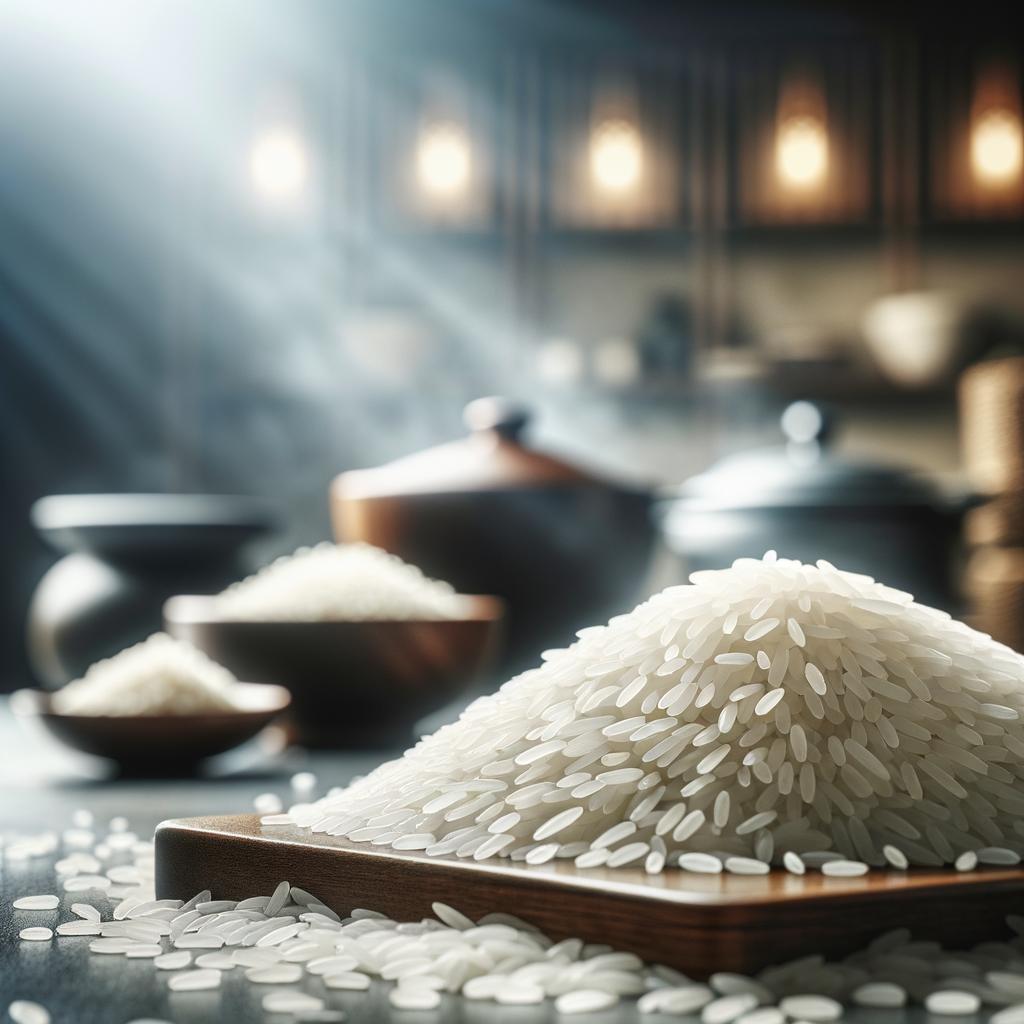Glutinous White Rice

Description
The ingredient that graces our food story today is none other than the humble, yet magnificent, glutinous white rice. Taking its name from the Latin word 'glutinosus', which translates to 'sticky', this rice is not actually glutinous or contains gluten. It's a plump, short-grain rice, with a chalky white appearance that transforms into a translucent, glossy pearl when cooked. The texture is exceptionally sticky and chewy, a delightful mouthfeel that is distinct from other rice varieties. Its flavor profile is subtly sweet, making it a versatile player in both savory and sweet dishes. Unique to glutinous white rice is its high amylopectin starch content, which is responsible for its characteristic stickiness.
Primary Uses
Glutinous white rice is a culinary superstar in many Asian cuisines. In Japan, it's the key ingredient in mochi, a traditional sweet treat enjoyed during New Year celebrations. In Thailand, it's the star of 'khao niao mamuang', or mango sticky rice, a beloved dessert. Chinese cuisine uses it in 'zongzi', sticky rice wrapped in bamboo leaves, traditionally eaten during the Dragon Boat Festival. Beyond its culinary uses, glutinous white rice also has cultural significance. In some Asian cultures, it's used in religious ceremonies and rites of passage, symbolizing unity and togetherness.
History
The story of glutinous white rice dates back thousands of years, originating in Southeast Asia. Its cultivation spread across the continent, intertwining with the history and culture of the people. In ancient times, it was considered a luxury, reserved for the upper echelons of society and special occasions. Over time, its use became more widespread, and it's now a staple ingredient in many Asian households. There's a romantic tale in Chinese folklore about sticky rice. It tells of a time when a village used sticky rice to mend a crack in their town's protective wall and successfully thwarted an invasion, thus earning its reputation as a symbol of protection and unity.
Nutritional Information
Nutritionally, glutinous white rice is a rich source of energy, providing a high amount of carbohydrates. It's low in fat and is a good source of essential minerals like manganese and phosphorus. While it's not as nutrient-dense as its cousin, brown rice, it does offer a unique texture and flavor that can make a meal feel more special and satisfying. However, due to its high glycemic index, it should be consumed in moderation, especially by those managing blood sugar levels. Despite this, in balanced amounts, glutinous white rice can certainly be part of a wholesome, nutritious diet.

